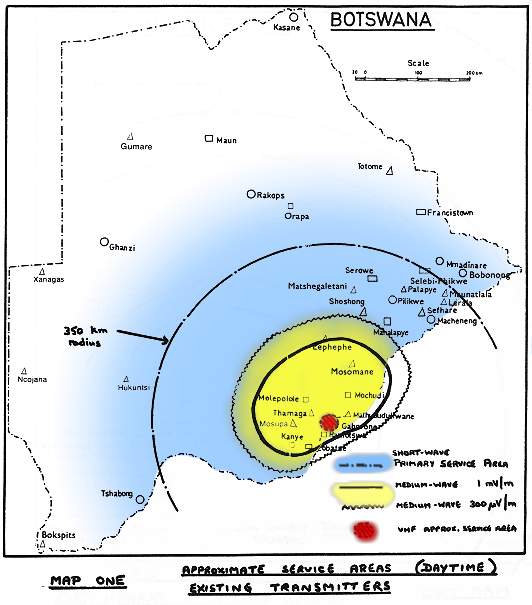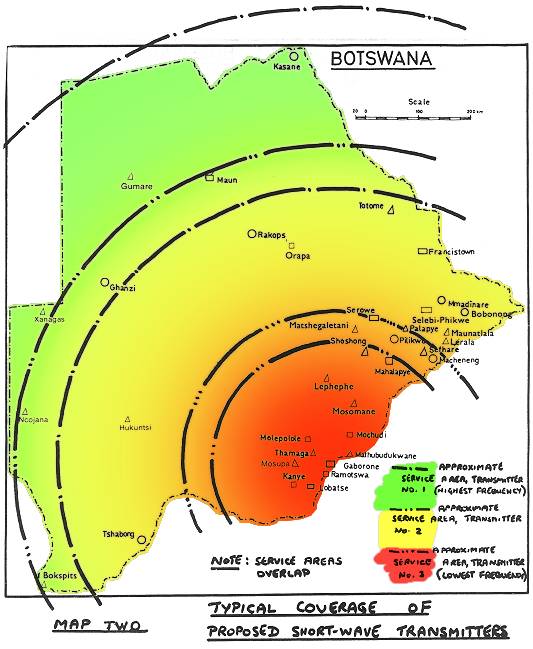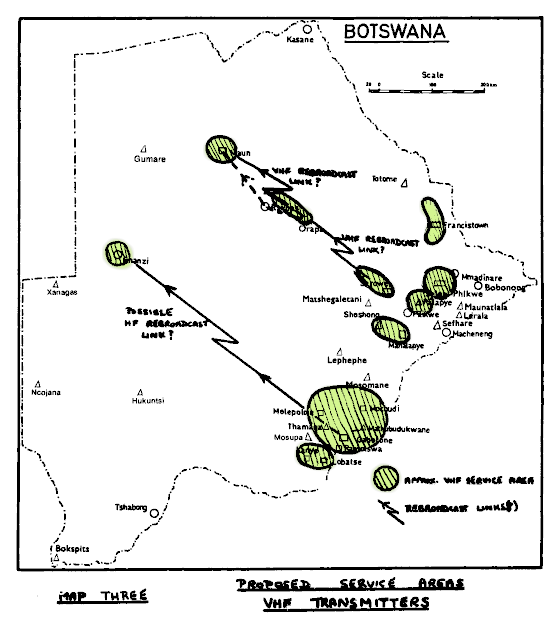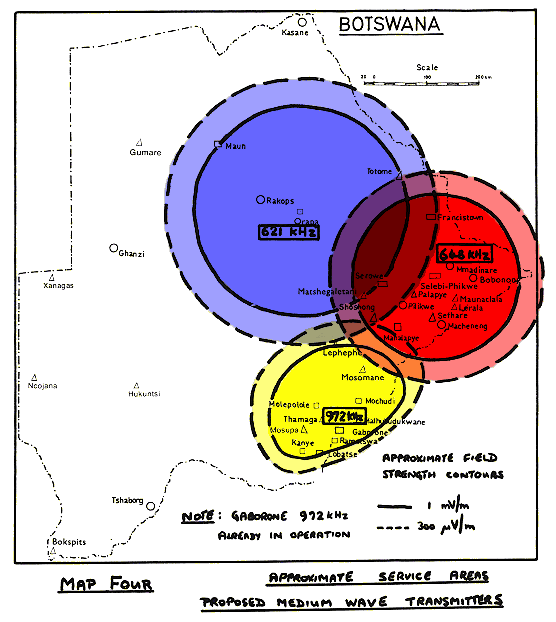Radio Botswana - 1978 coverage expansion plans

This map shows the situation when I arrived in Botswana. The outer, 350km radius, circle shows the approximate combined service area (coloured blue) of the old inadequate 10 kilowatt shortwave transmitters. Two shortwave frequencies were used at any one time, the higher frequency travelled further but might be unsuitable for listening closer in. Over large parts of the country the signal was ". . so weak as to be virtually inaudible during the day and barely comprehensible even after dark." (Taken from the 1978 Lawrence Report). Schools Broadcasting was particularly badly affected: ". . teachers sometimes have to abandon their attempts to listen for several days at a time, and just do their best with the written material that is provided as a backup."
The (yellow) inner, kidney-shaped area represents the rough daytime service area (1 mV/m and 300uV/m contours) of the 50 kilowatt medium-wave transmitter at Gaborone. At night this transmitter just about covered the whole country (and that's why it was put in) but night-time medium-wave reception can be very variable because of interference and ionospheric fading.
You can just see the (red) coverage of the 50 watt (!) VHF/FM transmitter installed at Radio Botswana's Gaborone studios.

The first step was to upgrade the shortwave service by transmitting on three consecutive frequency bands at once. There are about six suitable broadcasting bands in the range 3 to 11 MHz to choose from and roughly, the higher the frequency band, the further the transmission travels.
Because shortwave propagation also varies considerably from day to night lower bands are used morning and evening; higher bands when the sun is up. It is inevitable that listeners will have to retune their sets depending on the time of day. This is not very satisfactory for a domestic service but it was the only way we could achieve a real improvement with the manpower and development resources in the country. At least with three frequencies listeners could choose for themselves what time they wanted to retune, rather than having it forced upon them by the operation of the transmitters.

This was a preliminary plan for small unmanned VHF/FM transmitters to serve the major towns. Despite the much better broadcast quality, the problem with VHF is the approximately line of sight coverage. To efficiently cover the large distances involved in Botswana would have required powerful transmitters and high aerials. The flat topography of Africa's table-land didn't help with the latter, and there wasn't any power for the former. Getting a programme feed to remote transmitters was a problem as well (satellite feeds were only just being thought of), and we toyed with the idea of rebroadcasting the shortwave signal. At least that way the burden of retuning and putting up a decent aerial was removed from the listeners. Communications have improved these days, thank goodness.

The last stage of the improvements was to be another two medium wave sites. One of these could take advantage of high soil conductivity (salt pans) in the north. 50 kilowatt transmitters would require staff and so couldn't happen immediately. If the VHF/FM service could be made good enough it was even possible to imagine a second (commercial?) service on medium wave during part of the day.